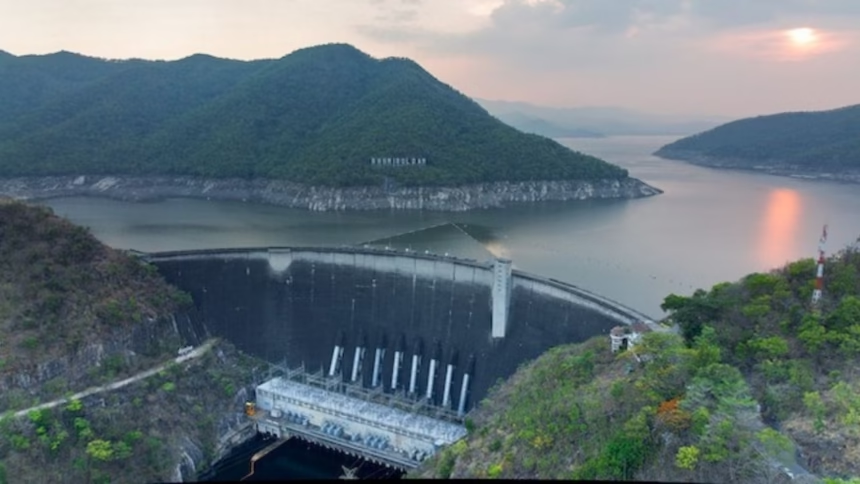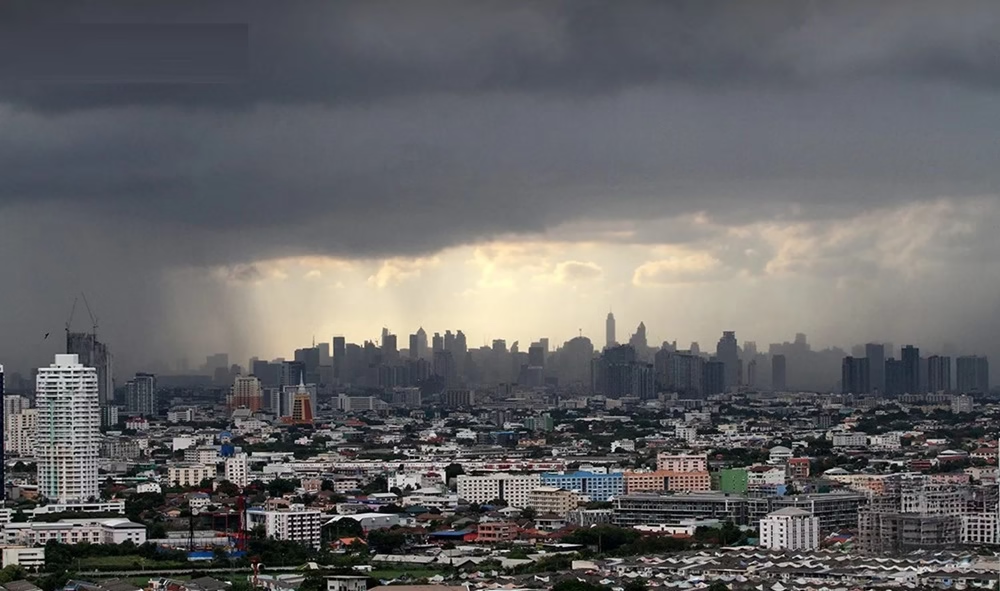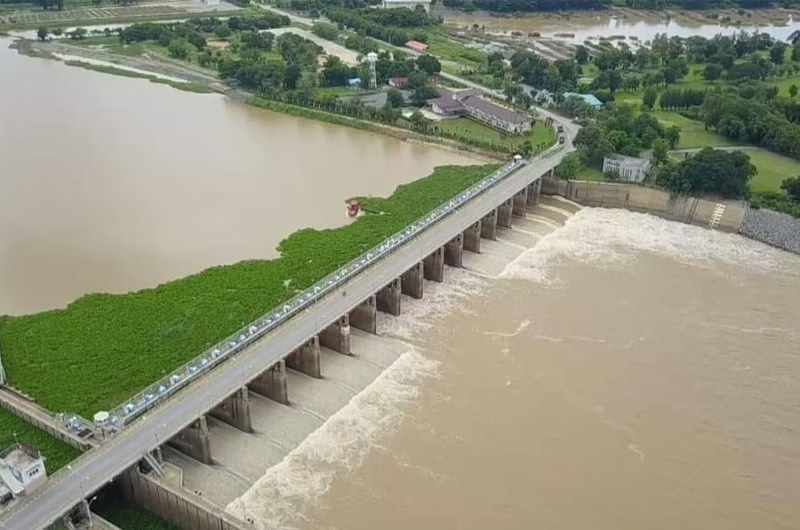TAK – The deputy secretary-general of the Office of the National Water Resources (ONWR) inspected the conditions of Bhumibol Dam and reported that Inflows have risen to more than 98 percent of capacity, with only 1.98 percent of storage space left.
With Tropical Storm Kalmaegi approaching, releases will be increased in steps from today. Outflows will start at 30 million cubic metres per day, then rise to 40 to 45 million cubic metres. Water levels in the Ping River downstream of the dam are expected to rise by up to 20 centimetres. The water will take around 8 to 9 days to reach the Chao Phraya Dam.
On Thursday, Mr Paitoon Kengkarnchang, ONWR deputy secretary-general, chaired a meeting on the current situation and release strategy for Bhumibol Dam. Local and national agencies joined, including Tak Province, EGAT, the Royal Irrigation Department, the Department of Disaster Prevention and Mitigation, the Public Relations Department, and the Tak Provincial Administrative Organisation. The team then inspected conditions around the dam.
He said Prime Minister Anutin Charnvirakul, who is also Minister of Interior, and Minister Attached to the Prime Minister’s Office Pharadorn Prisananantakul, instructed all agencies to prepare for Tropical Storm Kalmaegi.
The storm is expected to bring more rain to Thailand, with heavy to very heavy rain in some areas from 7 to 9 November. Affected regions include the Northeast, the East, the Central Plains, and the North.
Large Dams in the Storm’s Path
ONWR and partner agencies are tracking rainfall, runoff, and reservoir levels across the country. The focus is on large dams in the storm’s path, namely Bhumibol, Sirikit, and Ubolratana, which are now close to full. Releases must be planned carefully to protect the dams and reduce impacts downstream.
From ongoing assessments, Sirikit and Ubolratana can still take more inflow and are not a concern at this stage. The ONWR team visited Bhumibol Dam today to review on-site data and align plans with local agencies. The goal is to manage the storm risk well and keep impacts on communities to a minimum.
As of today, Bhumibol Dam holds 13,195 million cubic metres, equal to 98.02 percent of capacity. The current water level is 259.14 metres above mean sea level, with the full supply level at 260 metres. Remaining storage space is 266.92 million cubic metres, or 1.98 percent. The present release is 25 million cubic metres per day.
The Meteorological Department’s 7‑day forecast indicates about 80 millimetres of rainfall over the catchment, which could add around 301.92 million cubic metres of inflow. If releases step up to 30.00 million cubic metres per day, total storage in 7 days is projected at 13,323 million cubic metres, or 99 percent of capacity.
The meeting agreed that EGAT will increase releases in steps from today at 30.00 million cubic metres per day, then 40 and 45 million cubic metres per day. The ceiling is 60 million cubic metres per day. These releases are expected to raise downstream water levels by no more than 20 centimetres.
Chao Phraya Dam Water Release
Water released from Bhumibol will flow down the Ping River through Tak, Kamphaeng Phet, and Nakhon Sawan, then on to Chao Phraya Dam. The travel time is around 8 to 9 days. This should not raise upstream levels at Chao Phraya Dam. EGAT has been asked to adjust dam releases to match conditions, with dam safety and downstream impacts as the top priorities.
Agencies will provide regular public updates so communities can prepare in advance. Water from Bhumibol will contribute to the Chao Phraya Basin. At station C.2 in Nakhon Sawan today, discharge is 2,988 cubic metres per second.
From 6 to 14 November, it is expected to range between 2,833 and 3,110 cubic metres per second. Side flow from the Sakae Krang Basin is entering the Chao Phraya Dam at about 336 cubic metres per second. The plan keeps releases at Chao Phraya Dam at 2,700 cubic metres per second, with balanced diversion to the east and west floodways to speed drainage to the Gulf of Thailand.
Rainfall in 2025 has been clearly above normal. As of 3 November, cumulative rainfall reached 1,600 millimetres, 8 percent above average. In 2024, it was 1,705 millimetres, 5 percent above average. In higher rainfall years, such as 2022, cumulative rainfall hit 2,012 millimetres, 24 percent above average. In 201,1 it was 1,974.9 millimetres, 20 percent above average.
Given observed and forecast rain, agencies have coordinated since early 2025 to keep major reservoirs near full by 1 November, in line with the national water management calendar. This strategy secures water for the coming dry season.
ONWR and partner agencies will continue close monitoring of large dams that may receive more inflow from the storm. Operations will follow a basin‑by‑basin approach to coordinate releases, reduce risk, and limit impacts in each area.
















